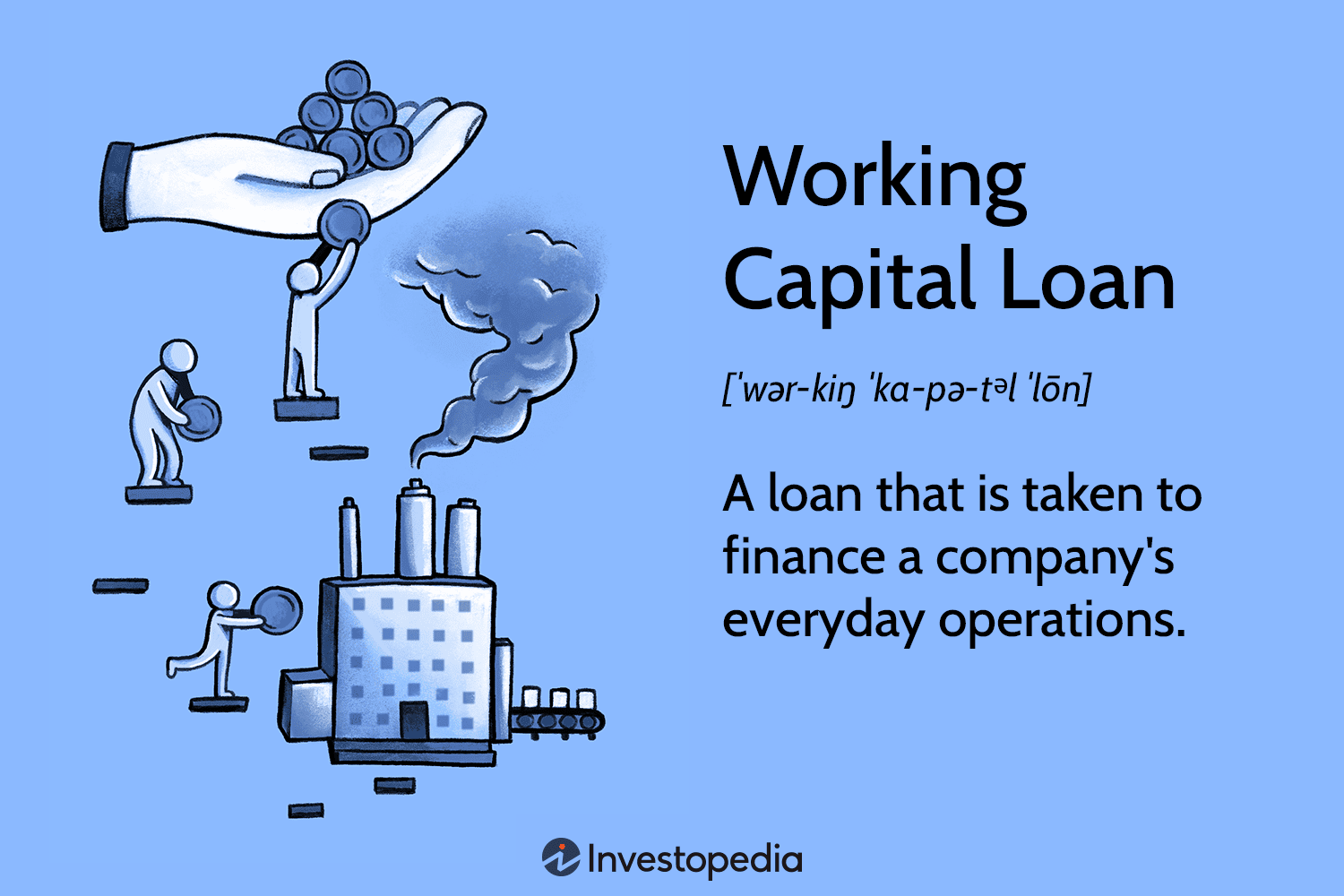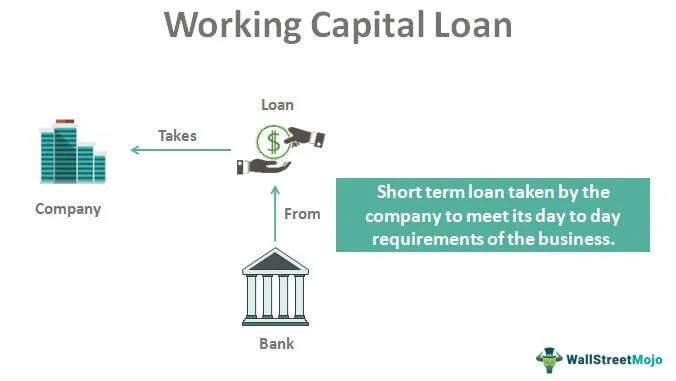In the fast-paced world of entrepreneurship, securing an advantageous position in the competitive market often depends on one’s ability to swiftly adapt and seize growth opportunities as they arise. This agility, more often than not, is directly tied to the financial flexibility of a business. Among the myriad of tools available to entrepreneurs for ensuring such flexibility, working capital loans stand out as a pivotal resource. Offering fast access to funds, flexible repayment terms, and the ability to cover a wide range of business needs, the best working capital loans can be the linchpin for business expansion and stability.
What are the Best Working Capital Loans?

Before diving into the specifics of what makes a working capital loan stand out from the rest, it is important to define what exactly these loans are. Working capital loans are a type of financing that businesses can use for their day-to-day operations. Unlike other types of loans, which may be used for specific investments or projects, working capital loans provide general funding to cover expenses such as payroll, inventory purchases, and marketing efforts.
Types of Working Capital Loans
There are several types of working capital loans available to entrepreneurs, each with its own unique features and benefits. Some of the most common types include:
- Business lines of credit: These are revolving credit facilities that allow businesses to draw funds up to a predetermined limit whenever needed. Interest is only charged on the amount drawn, and once repaid, the credit line is replenished.
- Merchant cash advances: This type of financing is based on future sales. A lender provides a lump sum payment in exchange for a percentage of the business’s daily credit card or debit card sales until the loan is repaid.
- Invoice factoring: This involves selling unpaid invoices to a factoring company for immediate cash. The factoring company then collects payment from the customers.
- Short-term loans: As the name suggests, these are short-term loans that must be repaid within a set period, usually less than a year. They often have higher interest rates but offer quick access to funds.
What Makes a Working Capital Loan the Best?
Now that we know the different types of working capital loans available, what sets the best ones apart from the rest? Here are some key factors to consider:
- Speed: One of the primary advantages of a working capital loan is its speed. The best loans offer quick access to funds, allowing entrepreneurs to capitalize on opportunities as they arise.
- Flexible repayment terms: Running a business can be unpredictable, and the ability to have flexible repayment terms can make a significant difference. Look for loans that offer options such as fixed or variable interest rates, longer repayment periods, and the option to pay back early without penalty.
- Reasonable interest rates: While working capital loans may have slightly higher interest rates than traditional loans, it is still essential to compare rates from different lenders to ensure you are getting the best deal.
- Minimal requirements: Some loans may require extensive paperwork, credit checks, and collateral. The best working capital loans often have minimal documentation requirements, making them more accessible to a wider range of businesses.
Finding the Best Working Capital Loan for Your Business

Choosing the “best” working capital loan depends on your specific business needs and financial situation. Here’s a breakdown of some popular options to help you narrow your search.
Comprehensive Guide to Choosing Working Capital Loans
Explore the best options for securing working capital loans to fuel your business growth. Here’s a detailed look at the top contenders:
Fundbox: Stands out for its efficiency and user-friendly approach:
- Offers a swift and streamlined application process, making it possible for businesses to receive decisions within just 24 hours. This rapid turnaround is particularly beneficial for businesses in urgent need of funds, ensuring they don’t lose momentum.
- Provides flexible loan amounts ranging from $1,000 to $150,000, catering to a wide variety of funding needs, from small cash injections to significant capital boosts.
- Features repayment terms directly tied to invoices, which greatly simplifies the repayment process by aligning it with your cash flow, making financial management easier.
- Boasts a transparent fee structure, ensuring borrowers fully understand the costs involved before committing, fostering trust and confidence.
Downsides:
- The interest rates can be higher than those of traditional loans, which might increase the cost of borrowing over time, possibly making it a less attractive option for cost-conscious businesses.
- The loan terms are relatively short, usually within a 12-week period, necessitating quicker repayment, which may put pressure on businesses with fluctuating income.
BlueVine: Highly appreciated for its flexibility and speed:
- Known for offering rapid funding, potentially within just 1 business day, which is incredibly beneficial for businesses needing immediate cash flow support to seize growth opportunities or manage unexpected expenses.
- Provides the option to access a business line of credit, offering flexible capital that businesses can draw on as needed, ensuring they only pay for what they use.
- Competes with competitive rates that are often more favorable compared to other short-term financing options, making it a cost-effective choice for many businesses looking to minimize borrowing costs.
Downsides:
- Requires a minimum revenue to qualify, which might exclude newer businesses or those with lower incomes from accessing these financial resources, potentially limiting growth opportunities for emerging enterprises.
- Loan terms are also on the shorter side, typically within a 6-month period, requiring quick repayment, which may not be suitable for all business models.
Kabbage: Known for its accessible financing solutions:
- Utilizes an easier qualification process by employing alternative data sources, which is particularly helpful for startups or businesses with limited credit history, enhancing their chances of approval.
- Offers flexible loan amounts that range from $2,000 to $250,000, accommodating an expansive spectrum of financing requirements, from minor operational needs to major expansions.
- The line of credit option allows for flexible access to capital, enabling businesses to draw funds as needed up to the maximum limit, providing a cushion for unforeseen financial needs.
Downsides:
- Interest rates can be higher due to the flexible approval criteria and shorter loan terms, potentially increasing the overall cost of borrowing. This aspect might make it less appealing to businesses with more conservative financial strategies.
- The loan terms are typically within a 6-month frame, demanding a faster repayment schedule, which could challenge businesses with irregular revenue cycles.
This guide aims to provide businesses with a comprehensive overview of the top working capital loan options, highlighting the benefits and potential drawbacks to consider when choosing the best fit for their financial needs.
Alternatives to Working Capital Loans: Explored

While working capital loans are a popular choice for many businesses, they may not be the best option for everyone. Here are some alternatives to consider.
Invoice Factoring
This financial strategy allows you to turn your accounts receivable into immediate cash by selling outstanding invoices to a factoring company. It’s a practical solution for businesses that need to enhance their cash flow without waiting for the standard payment cycles.
- Pros: One of the key benefits is the acceleration of cash flow, providing businesses with the urgent cash they require for daily operations, to meet immediate expenses, or to seize growth opportunities. It’s a straightforward way to access funds without taking on debt.
- Cons: However, the costs associated with invoice factoring, typically in the form of factoring fees, can be higher than traditional loan interest rates. Additionally, since the factoring company takes over the collection process, businesses lose direct control over their customer interactions for those invoices, which might not sit well with some.
Revenue-Based Financing
In this model, businesses obtain a cash advance against their future sales. It’s an appealing option for companies with predictable revenue streams, offering a repayment plan that adjusts according to incoming revenue.
- Pros: The adaptability of repayment terms based on revenue makes this a less burdensome option than fixed loan payments, particularly for startups and businesses with volatile sales. Moreover, it often comes with more favorable rates compared to conventional loans, making it an attractive option for young companies with robust sales projections but not enough history to secure traditional financing.
- Cons: The suitability of revenue-based financing varies greatly among businesses. It’s less advantageous for companies experiencing irregular sales patterns or those in industries with longer sales cycles. Furthermore, certain agreements may require a share of ownership to be given up as part of the financing deal, which could dilute the entrepreneur’s stake in their company.
Choosing the Right Option for Your Business

When it comes to financing options, there is no one-size-fits-all solution. The best choice for your business will depend on various factors, such as your company’s financial situation, industry, and goals.
Factors to be considered
Deciding on the most appropriate financial solution for your business involves a comprehensive evaluation of various factors:
- Loan amount: Assess the magnitude of funds your business needs. Different financing options cater to different scales, from small, short-term injections to substantial, long-term funding.
- Repayment terms: The flexibility and duration of repayment terms can significantly impact your cash flow and operational planning. It’s crucial to choose a repayment plan that aligns with your revenue projections and financial capacity.
- Interest rates: A thorough comparison of interest rates and fees is essential to ascertain the most cost-effective financing option. Higher rates can significantly increase the total repayment amount over time.
- Business Needs: Identify the immediacy and nature of your financial needs. Some scenarios may call for more flexible, short-term solutions like invoice factoring or revenue-based financing, while others might benefit from the stability of a traditional term loan.
- Credit Score: Your company’s credit history can greatly influence your eligibility and the terms offered by lenders. Some financing options are designed to be more accessible to businesses with lower credit scores, offering an alternative to traditional bank loans.
Additional Tips for Navigating Your Financing Options
- Comparison shopping: Exploring multiple lenders and financing products can unearth the most advantageous terms and rates, ensuring you secure the best possible deal for your business.
- Credit score considerations: Understanding the role of your credit score in securing financing can help you target the right options and improve your terms.
- Understanding the terms: It’s imperative to thoroughly review all documentation and agreements before committing to any financing arrangement to avoid unforeseen obligations.
- Exploring all avenues: Don’t limit your search to traditional loans. Modern financing solutions like business lines of credit, credit cards, and alternative lending platforms may offer more suitable terms for your specific needs.
By meticulously analyzing these aspects and considering a diverse range of financing solutions, businesses can make informed decisions that align with their financial health and strategic objectives, paving the way for sustained growth and success.
Benefits of Working Capital Loans

Despite the alternatives available, working capital loans remain a popular choice for many businesses due to their numerous benefits. Here are some of the key advantages that make this financing option attractive:
Fast Access to Funds
For businesses faced with sudden opportunities or unexpected challenges, the speed at which they can obtain funding is critical. The best working capital loans provide entrepreneurs with rapid access to the capital needed to overcome short-term financial hurdles, making it possible to act quickly when it matters most. This expedited funding process empowers businesses to maintain operational efficiency, capitalize on bulk purchase discounts, or swiftly address unforeseen expenses.
Flexible Repayment Terms
One size does not fit all when it comes to financing solutions, especially in the dynamic realm of business. The flexibility to tailor repayment terms to a business’s unique cash flow can significantly ease the financial pressure on entrepreneurs. By choosing working capital loans that offer adaptable repayment schedules, businesses can ensure that loan servicing complements, rather than conflicts with, their financial cycles, thereby safeguarding liquidity and operational continuity.
Leverage Growth Opportunities
Growth opportunities often come with a price tag that may not align with a business’s immediate cash availability. The best working capital loans afford businesses the financial leverage to pursue these opportunities, whether it’s expanding product lines, entering new markets, or investing in marketing campaigns. This capital investment can be the catalyst for scaling operations and increasing market share, thereby fueling long-term success.
Versatility of Use
The best working capital loans shine in their versatility, offering financing that can be applied across a spectrum of business needs. From replenishing inventory and covering payroll to launching advertising efforts or renovating physical locations, these loans provide a financial backbone for virtually any business expense. This multifaceted utility ensures that entrepreneurs have the resources they need, regardless of where the greatest need or opportunity lies.
Credit Score Improvement
Timely repayments of working capital loans can have a positive impact on a business’s credit profile. This dual benefit of meeting immediate financial needs while also building a stronger credit score sets the stage for more favorable financing terms in the future. For entrepreneurs looking to build or improve their business credit, working capital loans present a viable path to achieving those objectives.
Efficient Cash Flow Management
Managing cash flow effectively is one of the cornerstones of a successful business. Working capital loans offer an efficient means to bridge the gap between receivables and payables, thereby smoothing out cash flow fluctuations. This financial steadying allows businesses to operate smoothly and reduces the stress associated with timing mismatches in cash flow.
Conclusion

For entrepreneurs navigating the ups and downs of business growth, the best working capital loans offer a lifeline that combines rapid funding, flexibility, and broad utility. By strategically utilizing these loans, businesses can enhance their operational capabilities, seize growth opportunities, and build a more resilient financial foundation. In the quest for entrepreneurial success, choosing the right working capital loan can make all the difference.
Utilizing ‘best working capital loans’ as a strategic tool can not only bridge financial gaps but also propel businesses towards their long-term goals. For entrepreneurs looking to forge ahead, understanding and leveraging the key benefits of these loans can mark the beginning of a new phase of growth and profitability.